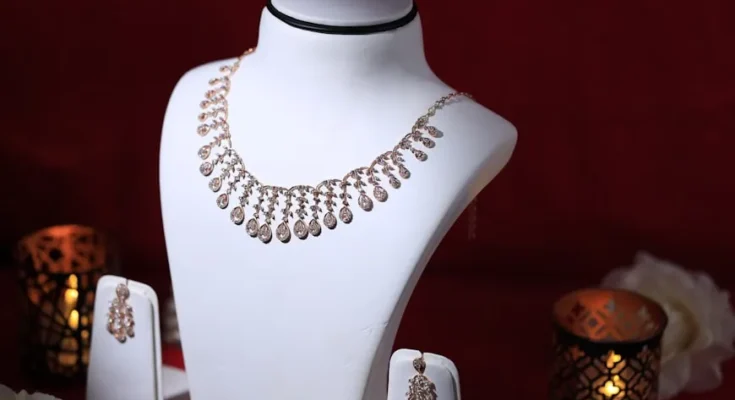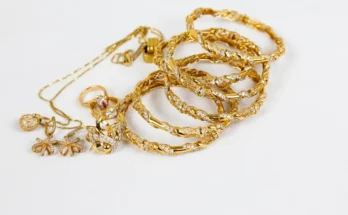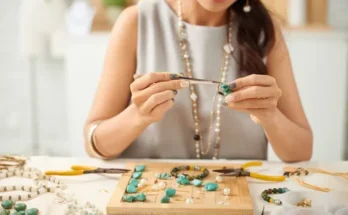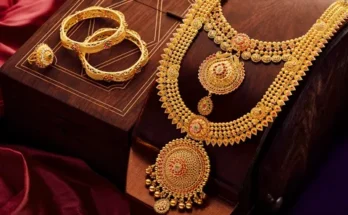More Than Ornament and A Legacy Worn:
Jewellery is never just about sparkles. It’s history you can wear, emotion you can hold, and memory you can pass down. Whether it’s a grandmother’s vintage brooch, a diamond ring symbolizing eternal love, or a bracelet bought on a trip abroad, each piece carries a silent story. Jewellery is a fusion of beauty and sentiment, crafted not just to dazzle the eyes but to touch the heart.
Across time and culture, humans have adorned themselves for identity, status, faith, rebellion, or remembrance. The shine of jewellery has not faded through centuries—it has evolved, transformed, and continued to speak, sometimes louder than words.
The Language of Jewellery:
-
Jewellery as a Form of Personal Expression
Each piece of jewellery we wear tells a story—our story. A pendant may whisper a name we cherish. A ring may silently shout a promise. Even a simple pair of earrings can say, “This is who I am today.”
Unlike fast fashion, jewellery often carries depth. It becomes part of our rituals—what we reach for before stepping into the world, what we cling to in times of grief, what we polish with reverence. It’s not just about matching an outfit. It’s about matching a mood, a memory, or a milestone.
-
Cultural and Emotional Significance
Around the globe, jewellery holds sacred value. In Indian weddings, gold jewellery is not just decoration—it’s blessing, tradition, and investment. In African cultures, beaded necklaces can signify tribe, age, and status. In ancient Egypt, amulets were believed to protect the soul.
Even today, jewellery marks life’s pivotal moments. Engagements, anniversaries, graduations, births—our biggest emotions are often housed in the smallest treasures. These pieces become part of our personal archives, holding feelings long after words fade.
The Evolution of Jewellery Through the Ages:
-
From Ancient Craft to Modern Art
Jewellery has journeyed through history, adapting with time yet never losing its essence. In ancient Mesopotamia, artisans shaped gold into intricate earrings and headpieces. The Romans loved engraved gemstones and signet rings. The Renaissance brought ornate religious jewellery, while the Art Deco period celebrated geometry and bold elegance.
Modern jewellery design still draws from these historical influences. Whether it’s vintage revivals, minimalist styles, or tech-integrated smart jewellery, the craft remains an art—one that blends tradition with innovation.
-
The Rise of Personalised and Meaningful Design
In the past, jewellery was largely about status and wealth. Today, it’s increasingly about individuality. Birthstones, name pendants, astrological charms, lockets with hidden messages—jewellery has become personal, customizable, and story-driven.
Designers now cater to not just aesthetics but emotions. People don’t just want beauty—they want meaning. Whether it’s a fingerprint etched into a silver ring or a necklace layered with symbols of one’s journey, modern jewellery reflects the soul as much as the style.
The Modern Jewellery Landscape:
-
Minimalism Meets Statement
Modern jewellery sits at an intersection of extremes. On one end, minimalism reigns—delicate chains, barely-there rings, clean shapes that whisper elegance. On the other, bold statement pieces turn heads and spark conversations.
This coexistence reflects the complexity of the modern wearer. Some days call for simplicity; others demand drama. The beauty of today’s jewellery is that it allows both expressions to live side by side, layered if desired, mixed without rules.
-
Sustainability and Ethical Craftsmanship
Jewellery is also undergoing an ethical awakening. Consumers are asking hard questions: Where were these stones sourced? Were the workers treated fairly? Is this gold recycled or freshly mined?
In response, many jewellers are embracing sustainable practices. Lab-grown diamonds offer sparkle without ecological cost. Ethical mining certifications are becoming industry standards. Artisans are using reclaimed metals, handcrafting pieces in small batches to reduce waste.
Ethical jewellery doesn’t sacrifice style. It enhances it—adding integrity to elegance and giving buyers a way to wear their values as well as their aesthetics.
Jewellery That Carries Generations:
-
The Sentimental Value of Inherited Pieces
Few objects hold as much emotional power as heirloom jewellery. A ring passed from grandmother to mother to daughter isn’t just gold—it’s legacy. It carries the touch of hands now gone, the scent of old drawers, the echo of family stories.
Heirlooms turn jewellery into living memory. Even when not worn daily, they’re kept close—tucked in velvet boxes, wrapped in silk, often brought out during significant moments as a bridge to the past.
Sometimes, a piece is remade—a brooch turned into a necklace, an old ring reset with modern stones. In doing so, the memory lives on, reshaped for a new era but rooted in old love.
-
Making New Heirlooms for the Future
Heirlooms aren’t always inherited. Sometimes, they’re created. The necklace bought to celebrate a child’s birth, the bracelet gifted after a hard-earned graduation, the earrings worn at your wedding—all of these can become tomorrow’s treasures.
Creating a piece with future generations in mind gives jewellery a purpose beyond the present. It becomes a vessel of love that, with care, may one day rest on another’s skin and heart.
The Business of Emotion:
-
The Emotional Drivers Behind Jewellery
Jewellery is often an emotional purchase—whether self-gifted or received. Advertisements have long leaned into this, with taglines like “A diamond is forever” turning stones into symbols of eternal love.
But today’s consumer is more conscious. They’re not just buying because an ad told them to. They’re buying because the piece resonates with their inner life, their journey, their identity.
Jewellery brands now tell stories. They highlight artisans, share the origins of their stones, and show real people wearing their creations. In doing so, they don’t just sell jewellery—they offer connections.
-
Social Media and the Digital Jewellery Boom
Instagram, Pinterest, and TikTok have revolutionized how we discover and desire jewellery. Influencers layer gold chains, stack rings, or wear unconventional pieces that go viral in moments.
This visual culture has democratized jewellery. You no longer need to visit a luxury boutique to find stunning pieces. Independent designers thrive online, and shoppers around the world can find unique, handmade, meaningful pieces at a click.
Digital platforms have made jewellery more inclusive and diverse, reflecting a wider range of styles, bodies, skin tones, and stories.
Conclusion:
Jewellery is one of the few things we own that stays close. It hugs our wrists, kisses our necks, adorns our fingers. It shares in our joys and comforts us in our losses. It shines when we celebrate, and sometimes, it carries tears within its stones.
From ancient times to modern lives, jewellery remains a part of who we are. It connects generations, cultures, and emotions. It is not frivolous—it is foundational. A small gold charm can carry more meaning than a book, more emotion than a speech.
So next time you clasp a necklace, slide on a ring, or pin a brooch to your jacket, pause. Feel its weight. Remember its story. Jewellery, after all, is not just what you wear—it’s what you carry.




